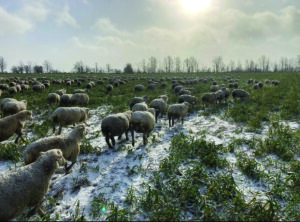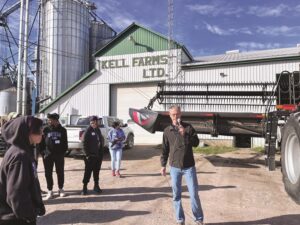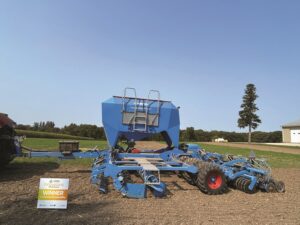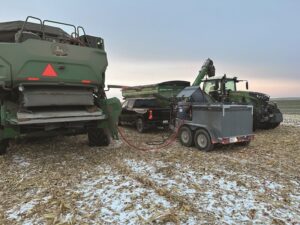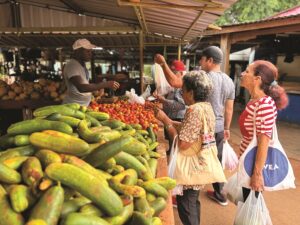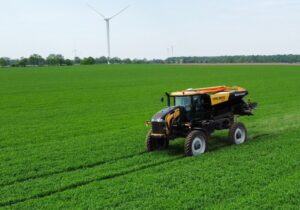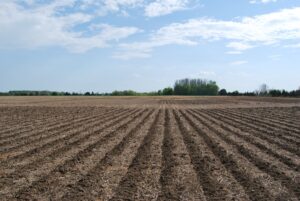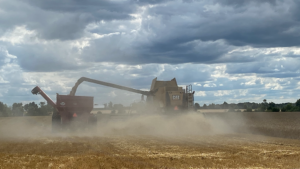Resilient to the core
PLANT AVAILABLE WATER CAPACITY
GUIDING A CROP through drought conditions has less to do with the amount of rain a field receives and more to do with the water that is available to the plant in the soil. It is a property called plant available water capacity, and now researchers in Ontario are looking at how different management practices, such as no-till planting, affect plant available water in various soil types across Ontario.
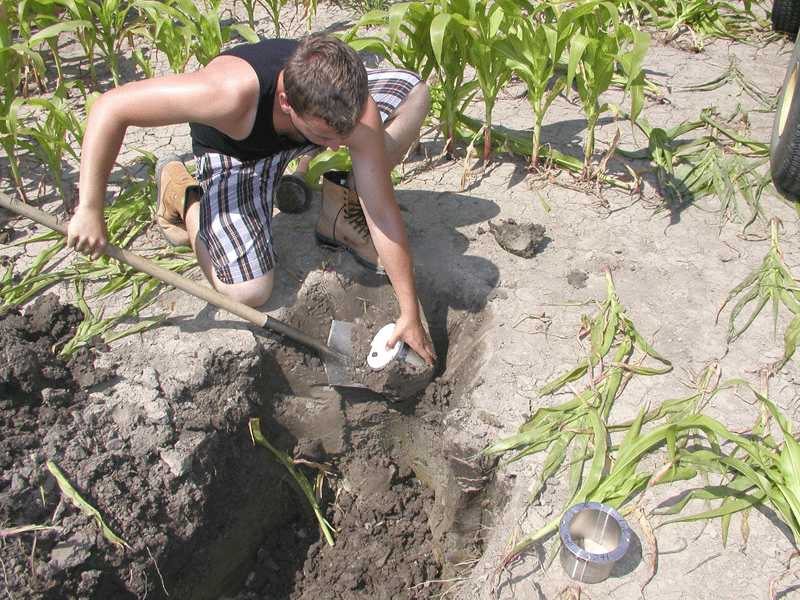
The Ontario Soil and Crop Improvement Association (OSCIA) project – funded in 2013 by the Water Resource Adaptation and Management Initiative (WRAMI) — utilized special soil monitoring equipment including a soil corer that uses a larger diameter core than standard bulk density tests.
“The funding for this project has allowed us the opportunity to test soil at sites across the province using less common techniques for measuring soil moisture that are commonly used in irrigated field crops and golf greens,” says Heather Engbers, OSCIA research assistant. “We’re interested in learning whether these tools will contribute to farmers’ understanding of how drought affects soil health and plant growth.”
HOW CORE TESTING WORKS
The researchers are including 10 sites in the program that account for as many soil types as possible. Core samples were taken in spring and summer 2013 and were tested in Agriculture and Agri-Food Canada’s Harrow research laboratory, which is currently the only facility in the province set up for this type of analysis.
In the lab, researchers saturated the core samples and used different pressures to force water out. The test measures the water content of the soil under different pressures. The greater the water content at specific known pressures where plant roots can access it, the better the overall soil health. The aim is to measure plant available water — the range between field capacity (the point of saturation that inhibits roots from taking up nutrients) and wilting point (drought).
“The samples are helping us to understand a lot about soil structure and the range for plant available water,” Engbers says. “And we’re starting to see variances based on management and soil type.”
PROBING WATER ISSUES
In addition to the core samples, each of the sites were tested with a 20 centimetre soil probe (longer than standard) that is inserted into the ground. Engbers says the probes provide a reading of the percentage of soil water.
The researchers visited sites one to two times throughout the growing season to take readings using the probe, as well as a more specialized piece of equipment called a cone penetrometer. For 2014, they aim to visit sites on a more regular basis, if the season proves drier than 2013.
“The penetrometer measures resistance down the soil profile,” says Engbers. “It gets inserted into the field to a depth of 45 centimetres and the reading on the screen shows a curve of penetration resistance.”
The researchers collect readings from both the penetrometer and the probe and test how their readings stack up against their original graphs relating to soil water availability.
“This equipment is easy to use and would be fairly accessible for farmers,” she explains. “Most agronomists have a moisture probe and there’s potential for other tools to become more widely available for producers if our research shows they contribute strongly to our understanding of moisture availability.”
HOW MANAGEMENT PRACTICES FIT IN
Of the 10 sites being studied, the researchers are comparing how three different management practices — tillage, rotation, and controlled vehicle trafficking (RTK systems) — affect water availability for the crop.
While early results indicate that soil structure is improved by following management practices such as reduced tillage and a more diverse crop rotation, more research needs to be done to tie that to water availability and plant stress.
“As we continue to collect more data, the picture will be much more applied and it will be easier to understand how conservation management practices have improved soil structure, which translates into greater plant available water and drought resilience,” Engbers says. “The differences in physical properties should be enough to get producers talking about it for now and thinking about soil health as something they can actually measure and see.”
BUILDING A CURVE
Engbers says the project has secured funding for the 2014 season and the coring and field measurements will continue. The researchers aim to build a curve of data that shows how much stress the plant is under and hopefully how improved soil quality (through the conservation practices) translates into reduced periods of growing season water stress.
“This is important work about the physical quality of soil,” Engbers says. “It will help farmers track how moisture is available and help them better understand their fields.” •










